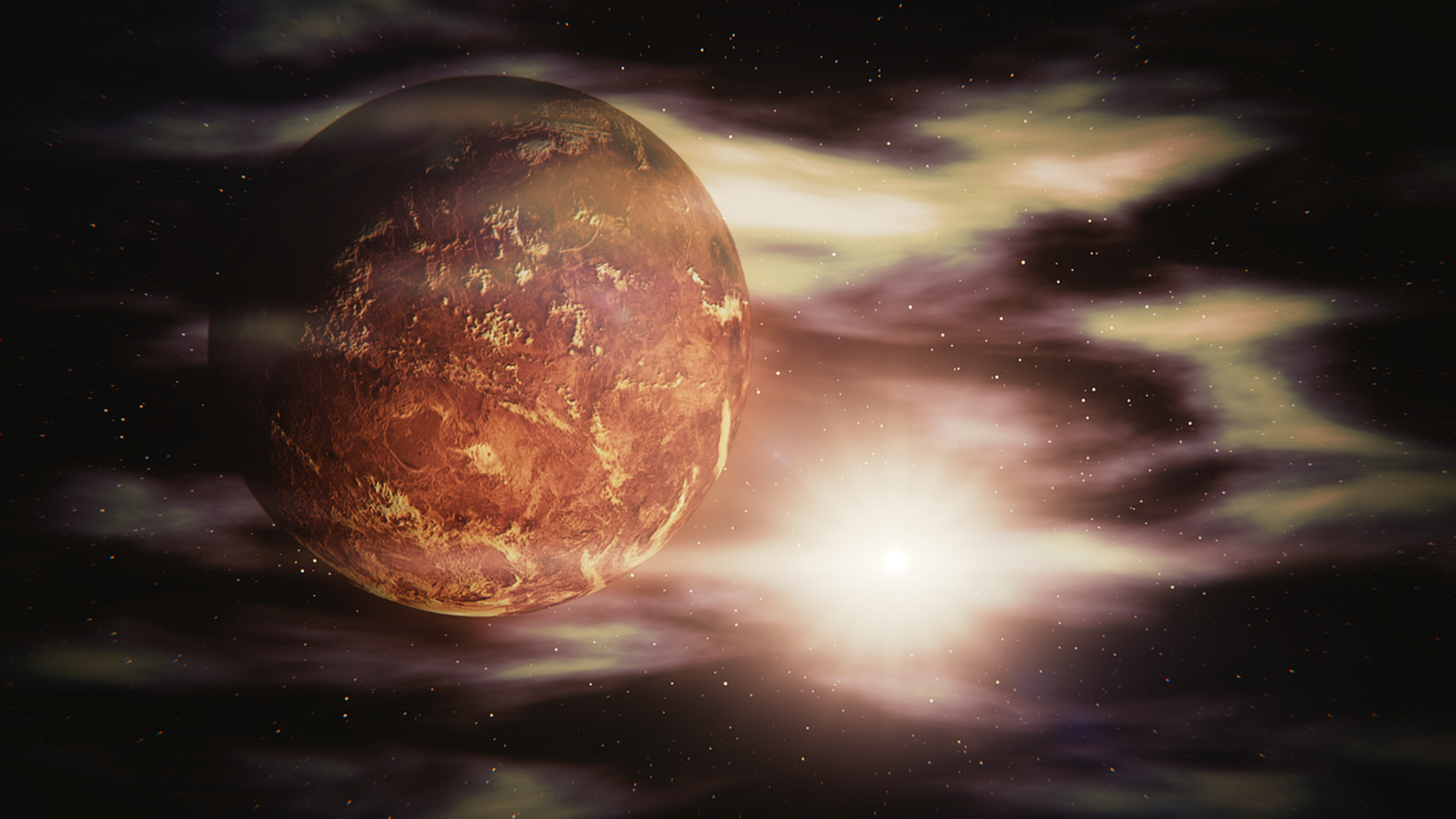https://sputniknews.in/20230927/indias-shukrayaan-1-configured-for-venus-4466281.html
India’s Shukrayaan-1 Configured for Venus: ISRO
India’s Shukrayaan-1 Configured for Venus: ISRO
Sputnik India
The chairman of the Indian Space Research Organisation (ISRO) said that the expedition to Venus, the brightest planet in our solar system, has already been... 27.09.2023, Sputnik India
2023-09-27T14:10+0530
2023-09-27T14:10+0530
2023-09-27T19:05+0530
science & tech
science & tech
india
delhi
japan
indian space research organisation (isro)
shukrayaan-1
chandrayaan
space satellite
space industry
https://cdn1.img.sputniknews.in/img/07e7/09/1b/4467278_0:0:1280:720_1920x0_80_0_0_2c37e532989ac7c08f0af9ce0048d1ec.png
In the wake of the successful launch of the moon mission Chandrayaan-3 this August, Indian Space Research Organisation (ISRO) chairman Sreedhara Somanath announced on Tuesday that India is all set for its mission to Venus. He also claimed that the mission's payloads have been developed, marking an important step in India's exploration of space. He described Venus as a fascinating planet and claimed that research into the planet could provide answers to a number of open space science topics.The European Space Agency's (ESA) Venus-Express mission - the first probe intended to investigate Venus in more than a decade - was successfully launched by a Russian rocket. Even Japan's Akatsuki Venus Climate Orbiter, which has been in orbit since 2016, completed a trip to the planet.More than a third of the 30 space missions to fly successfully by or orbit Venus to date were part of the former Soviet Union's Venera series of robotic probes.Following ISRO chief's announcement about India's Venus mission, a space expert shared his views on the development with Sputnik India.According to Dr. T.V. Venkateswaran, a scientist associated with Vigyan Prasar, which comes under the Indian government's Department of Science and Technology, Venus is a sister planet to Earth, and the size of Venus and the Earth are somewhat similar.But the big difference between the two planets, as per Venkateswaran, is that Venus rotates very slowly, taking about 200 days to go around the sun.Moreover, it is rotating from east to west, which means the sun will rise in the west on Venus, he revealed. Venkateswaran observed that Venus is a mysterious planet.After Chandrayaan-3's success, ISRO launched the Aditya L1 spacecraft on 2 September this year, marking India's first space-based mission to study the Sun.
https://sputniknews.in/20230927/x-ray-polarimeter-satellite-mission-set-for-december-launch-isro-chief-4465163.html
india
delhi
japan
Sputnik India
feedback.hindi@sputniknews.com
+74956456601
MIA „Rossiya Segodnya“
2023
Swapna Nair
https://cdn1.img.sputniknews.in/img/07e7/09/12/4320104_0:0:681:681_100x100_80_0_0_ca8a7d4d582609272840ffdd1cde7278.jpg
Swapna Nair
https://cdn1.img.sputniknews.in/img/07e7/09/12/4320104_0:0:681:681_100x100_80_0_0_ca8a7d4d582609272840ffdd1cde7278.jpg
News
en_IN
Sputnik India
feedback.hindi@sputniknews.com
+74956456601
MIA „Rossiya Segodnya“
Sputnik India
feedback.hindi@sputniknews.com
+74956456601
MIA „Rossiya Segodnya“
Swapna Nair
https://cdn1.img.sputniknews.in/img/07e7/09/12/4320104_0:0:681:681_100x100_80_0_0_ca8a7d4d582609272840ffdd1cde7278.jpg
science & tech, india, delhi, japan, indian space research organisation (isro) , shukrayaan-1, chandrayaan, space satellite, space industry, space exploration, space rocket, human spaceflight
science & tech, india, delhi, japan, indian space research organisation (isro) , shukrayaan-1, chandrayaan, space satellite, space industry, space exploration, space rocket, human spaceflight
India’s Shukrayaan-1 Configured for Venus: ISRO
14:10 27.09.2023 (Updated: 19:05 27.09.2023) The chairman of the Indian Space Research Organisation (ISRO) said that the expedition to Venus, the brightest planet in our solar system, has already been configured, and the payloads have been designed for the next mission.
In the wake of the successful launch of the moon mission Chandrayaan-3 this August, Indian Space Research Organisation (ISRO) chairman Sreedhara Somanath announced on Tuesday that India is all set for its mission to Venus.
He also claimed that the
mission's payloads have been developed, marking an important step in India's exploration of space.
Speaking at the Indian National Science Academy in Delhi, Somanath said that India has many more missions in the pipeline and the Venus mission has been configured, the payloads have also been developed for it.
He described Venus as a fascinating planet and claimed that research into the
planet could provide answers to a number of open space science topics.
"Venus is a very interesting planet. It also has an atmosphere. Its atmosphere is so thick. The atmospheric pressure is 100 times that of Earth, and it is full of acids. You cannot penetrate the surface. We don't know whether its surface is hard or not. Why are we trying to understand all of this? Earth could be Venus one day. I don't know. Maybe in 10,000 years [Earth] will have changed its characteristics. Earth was never like this. It was not a habitable place a long time ago,” Somanath said.
Earth's nearest neighbour in the solar system is Venus, the second planet from the Sun. Given that it resembles Earth in size and density, it is one of the four terrestrial inner planets and is also referred to as the twin of Earth.
The European Space Agency's (ESA) Venus-Express mission - the first probe intended to investigate Venus in more than a decade - was successfully launched by a Russian rocket.
Even Japan's Akatsuki Venus Climate Orbiter, which has been in orbit since 2016, completed a trip to the planet.
More than a third of the 30 space missions to fly successfully by or orbit Venus to date were part of the former Soviet Union's Venera series of robotic probes.
Following ISRO chief's announcement about India's Venus mission, a space expert shared his views on the development with Sputnik India.
According to Dr. T.V. Venkateswaran, a scientist associated with Vigyan Prasar, which comes under the Indian government's Department of Science and Technology, Venus is a sister planet to Earth, and the size of Venus and the Earth are somewhat similar.
But the big difference between the two planets, as per Venkateswaran, is that Venus rotates very slowly, taking about 200 days to go around the sun.
Moreover, it is rotating from east to west, which means the sun will rise in the west on Venus, he revealed. Venkateswaran observed that Venus is a mysterious planet.
"Even with a power telescope, you won't be able to see the ground because it's always permanently covered with cloud, most likely - sulfuric acid. So it's a mysterious planet," the space scientist concluded.
After
Chandrayaan-3's success, ISRO launched the
Aditya L1 spacecraft on 2 September this year, marking India's first space-based mission to study the Sun.



